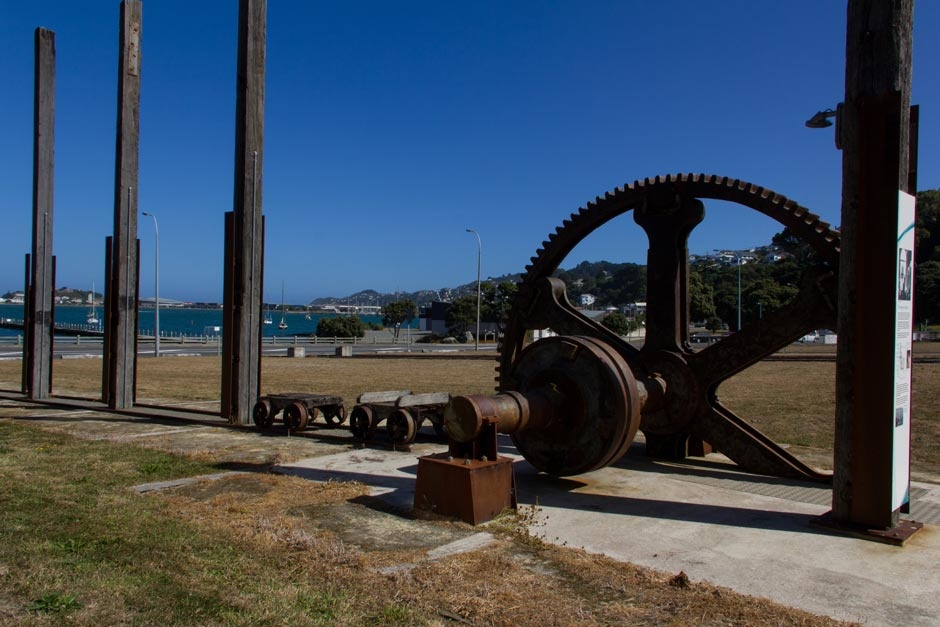
Evans Bay Patent Slip (1873)
Marine servicing centre
Steamships appeared on the interprovincial and trans-Tasman routes in the 1850s. Coal-guzzling and subsidy-swilling, they were too inefficient to compete seriously on the New Zealand-Britain run until the mid-1880s. In the 1860s, however, plans for the Panama Canal provoked a display of cargo cultism from the Wellington Chamber of Commerce, which believed that Wellington had only to build slipway facilities for the mail liners to make the city their Pacific mail terminal. It did not work out that way and the canal project was put on hold. However, in 1866 a British firm had sent hundreds of tonnes of machinery to Evans Bay, where it sat for five years until locals, backed by British investors, formed the Wellington Patent Slip Company (WPSCo).
It took two years and diving bells to build the slipway. On 2 May 1873 the 316-ton barque Cyprus rode up the slipway on the 76-m-long cradle known as ‘The Great Southern’. Ships of 2000 tons or more could be winched up along a rail track and into the WPSCo’s complex, but without the expected big Panama liners, most customers were smaller – and therefore less profitable. Disappointed British shareholders jumped at a Union Steam Ship Company takeover bid and must have been furious when the Wellington Harbour Board tried to thwart the deal and imposed onerous conditions on the ‘Southern Octopus’, including building a second, small slipway.
The slipway had its moments. A long-running dispute over travelling allowances here triggered the calamitous 1913 waterfront strike. In 1931 the harbour board took over the site and leased it back to the Union Company. In the Second World War it was used to build minesweepers. The Union Company moved out in 1961. Six years later the board upgraded the smaller slip and closed the older one. Finally, in May 1985 the era of ship-caused traffic jams as another customer was winched across the road came to an end.
The old site is a now pleasant pocket park and dog-exercising area, commonly known as ‘Cog Park’ since the 2008 return of the restored giant driving wheel. The slip’s 1869 Appleby double horsepower engine is in the Tokomaru Museum. Out in the water you can see four piles from the original slipway wharf, the smaller 1922 jetty (under threat of demolition at the time of writing) and the slipway itself.
Further information
This site is item number 43 on the History of New Zealand in 100 Places list.
On the ground
There is on-site interpretation
Websites
Book
- David Johnson, Wellington Harbour, Remarkable View, Auckland, 1996









Community contributions